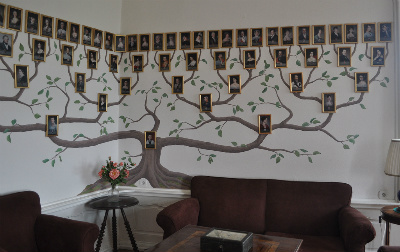A Tool to Help Achieve Your Writing Goals: Mind Mapping Pt.II
Biff Barnes
Writers can use mind maps in two distinctly different ways. The first is visual brainstorming to trigger creativity and capture ideas. It’s sometimes referred to as clustering. From a central idea you create radials leading to related sub topics. Each subtopic may suggest additional details radiating out from them.
Let’s look at an example you might use in creating a family history. A family tree is really a form of mind map. Begin by writing your name (or the name of the person you are using as a starting point) in the center of a blank page. The assorted lines of the family radiate out from the center branching as they split through the generations. But as you add names along these lines note details like dates, places the person lived, occupations, notable accomplishments, notes on interesting anecdotes etc, about the person. The visual representation of your family will allow you to see connections, commonalities and what’s missing. The map will give you an overview of the book project you want to create.

The next step is to use your map is as an organizational tool to drill down into the ideas you’ve included. Edit and add detail to your map. If you have duplicated ideas, delete them. Add visuals. Some mappers believe that the visuals work best if hand drawn. I find –given my lack of artistic skills – that photos can work just as well. An image of the family farm house or Uncle Will in his Navy uniform as he heads off to the Pacific in World War II can help focus your thinking. Using colors or icons can help you see connections on the map. For example use blue to show military service, dollar signs to show ancestors who were entrepreneurs or businessmen. These connections may suggest themes that you’ll want to develop in your book.
The second way to use mapping is to focus on details. The example below shows a writer Joanna Penn’s mind map focusing on capturing details and ideas on how to describe a storm in Arizona.

An author may create several of these very focused maps to illuminate particular elements of the kind of overview discussed above.
As you begin writing you can use the mind map to create an outline for your book. You will already have the topic, subtopic, detail relationship clearly delineated on the mind map. All you need to do is reproduce it as text.
Some people find that even after creating an outline keeping their map handy helps them stay focused on where they are going with their project.
Mapping works differently for different people. What it always does though is to give the person doing the mapping a visual overview of her project. For a writer having that overview is essential.